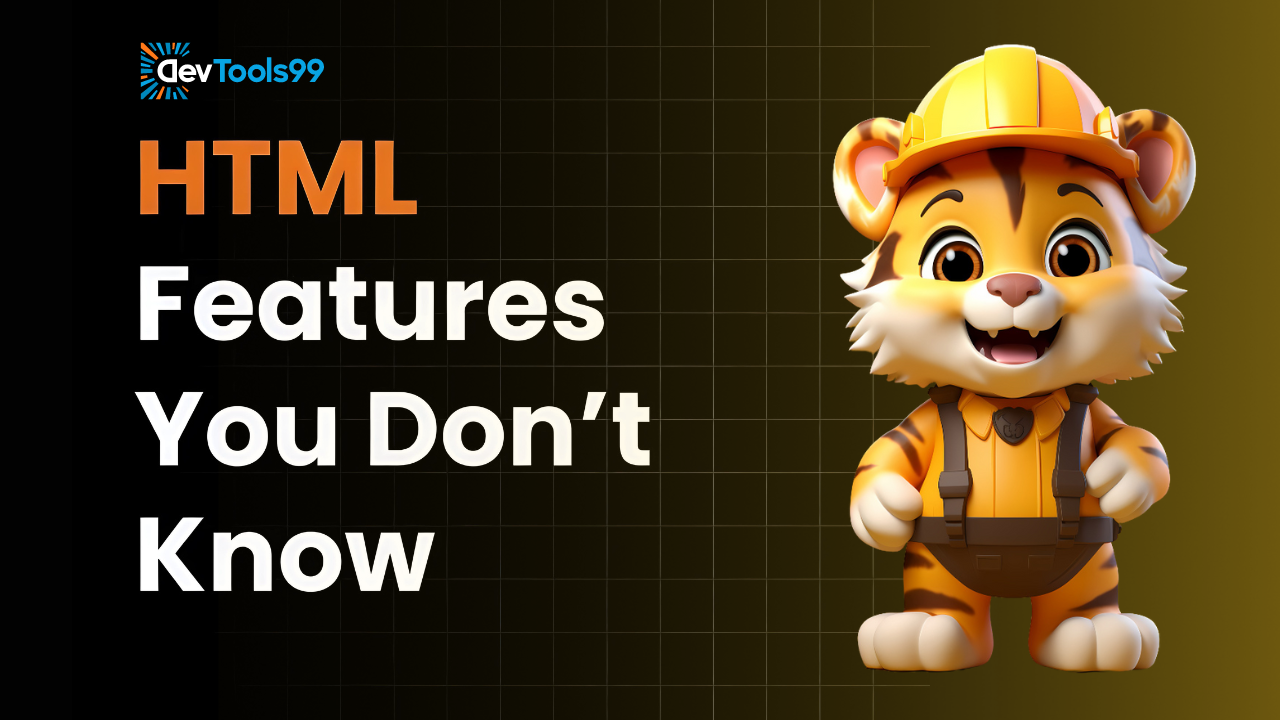
6 HTML Features You Might Not Know About
HTML continues to evolve, offering developers useful attributes and elements that enhance interactivity and functionality. Some of these features are lesser-known but can significantly improve your website's usability. Below, we'll explore six HTML features that you might not be aware of, but should definitely know.
1. abbr - Abbreviation Element
The <abbr> element is used to represent abbreviations or acronyms. By using this element, developers can provide additional context to users by showing the full form of the abbreviation when they hover over it. This is particularly useful for improving accessibility and clarity in documents.
<abbr title="HyperText Markup Language">HTML</abbr>In the example above, when users hover over "HTML," the browser will display "HyperText Markup Language" as a tooltip.
2. mark - Highlighting Text
The <mark> element is used to highlight text. It's a quick and effective way to make certain parts of your content stand out, like highlighting search terms or important sections in an article.
<p>This is an important <mark>highlighted</mark> text.</p>The highlighted text can help draw attention to key information on your webpage.
3. contenteditable - Editable Content
The contenteditable attribute allows you to turn any HTML element into something that users can edit directly in the browser. This is great for creating interactive content, such as live text editors or admin panels where users need to make changes on the fly.
<div contenteditable="true">Edit this text.</div>When applied, users can click on the text within the <div> and make changes as if it were a text field.
4. download - Download Attribute
The download attribute is a simple way to allow users to download files directly from a link. It also lets you specify a custom filename for the downloaded file.
<a href="file.pdf" download="custom-name.pdf">Download PDF</a>In this example, clicking the link will download the file as "custom-name.pdf" regardless of its original filename.
5. spellcheck - Spell Check Attribute
The spellcheck attribute tells the browser whether it should check the spelling and grammar of the text inside an element. This is especially useful for input fields or text areas where users are expected to type.
<textarea spellcheck="true"></textarea>Setting spellcheck to true ensures that browsers will underline any misspelled words, enhancing user input accuracy.
6. accesskey - Keyboard Shortcuts
The accesskey attribute allows you to assign a keyboard shortcut to an element, enabling users to interact with your page more efficiently. The key combination to activate the access key differs slightly between browsers, but this feature can improve accessibility and navigation.
<button accesskey="s">Submit</button>In this example, pressing Alt + S (on most browsers) will activate the "Submit" button, making the form easier to navigate for keyboard users.
Conclusion
These six HTML features offer useful ways to enhance your website’s interactivity, accessibility, and overall user experience. By implementing elements like <abbr> and <mark>, or using attributes like contenteditable and download, you can make your web pages more user-friendly and functional.
Follow Us:
Stay updated with our latest tips and tutorials by subscribing to our YouTube Channel.
